Part 2 : Bayswater – Tales from the Crypt
Jimmy Adams
At the beginning of the 70s I joined the Bayswater club, holed up in a long narrow side section of a Serbian Orthodox church quite near to Notting Hill in West London. This so-called ‘crypt’ had fallen into disuse and disrepair and some Yugoslav chess players offered to refurbish it, if the church elders would then allow them to have sole use of the area as a chess club venue. However, even after all the painting and decorating I doubt whether it would have met today’s Health and Safety standards. Nevertheless, as far as I was concerned, it was a lot of fun being in Bayswater’s cosmopolitan coffee house atmosphere, which reminded me of the En Passant, by now long since closed down.
The club also played in leagues – and even held periodic weekend tournaments, which at that time in London were few and far between, usually taking place only over bank holidays. Ron played in three of these, his best result coming in the second Bayswater Open where he finished runner up to grandmaster Sergio Mariotti, who joined the club during his stay in England in 1970/71. In fact, if Bayswater is remembered today, it is most likely for the Italian champion’s spectacular blindfold displays, given free of charge and going up to 12 boards simultaneously. Incidentally, it pleased me to see these feats commemorated not so long ago in a unique and authoritative book on blindfold chess, written by Eliot Hearst and John Knott.
I took part in the inaugural Bayswater Open and after Ron had won his first round game, I thought this would be a good moment to ask him: “Well, what do you think of the tournament so far?” Upon which, instead of the conventional reply “Rubbish!”, back came more specific criticism: “I’ve never played in a corridor before!” followed by a complaint that the atmosphere was “stuffy”. Replying in like fashion and alluding to the famous ‘corridor mate’, I gave him some unsolicited advice: “So, better take extra care you don’t get mated on the back rank!” But, as usual, Ron had the last word: “Then can you open the window and give my king some luft !” Funnily enough, these words somehow turned out to be prophetic when we met in the next round . . .
Jimmy Adams – Ron Harman
Bayswater Open 1970
Caro-Kann Defence
1 e4 c6
Ron had a very broad repertoire of openings so no first move reply would have surprised me. Not that it mattered because we didn’t really ‘prepare’ against opponents in the old days. The chosen line brings to mind the wit of the forgotten chess master, Gyula Breyer, forerunner of the ‘hypermodern school’ of the 1920s. Breyer lampooned the names of this and certain other openings, stating that Caro only went as far as advocating 1…c6, and Kann 2…d5, and it was left for others to develop the theory and practice of the opening from the third move onwards.
We can all take comfort in Mikhail Tal’s admission: “There are two types of sacrifice: those that are sound and mine!”
At this time, I had no particular reason to be concerned about 1…d5, as it was only much later, in 1993, that Ron’s book, Winning with the Scandinavian, written jointly with Shaun Taulbut, was published. Here Ron’s main focus lay in 1 e4 d5 2 exd5 Nf6 and he included quite a few references to his own games with this line, which he had played as far back as the early 60s when it was rarely seen in tournament and match play.
Actually his interest in 2…Nf6 had first been kindled by an octogenarian by name of Mr S. Price, who employed it regularly in casual games on Islington chess club nights. The versatile Mr. Price would also meet 1 e4 with 1…e5, challenging opponents to take him on in the offbeat Two Knights Defence variation: 2 Nf3 Nc6 3 Bc4 Nf6 4 Ng5 d5 5 exd5 b5!? And even when I was once talking to him about great masters of the past who had missed out on winning the world title, he switched the conversation to opening theory: “At home I have a book on Carlsbad 1929, it’s in German, and it says that the defence 1 d4 d5 2 c4 e6 3 Nc3 c5!? is playable against anyone in the world – except Rubinstein!” I suppose a 60s equivalent of this would have been “. . . the defence 1 e4 c5!? is playable against anyone in the world – except Mikhail Tal!”
2 Nc3 d5 3 d4 dxe4 4 Nxe4 Nf6 5 Nxf6+ gxf6
Former world champion Smyslov had won some fine games with this recapture, which adds a sharper character to the normally ultra solid Caro-Kann. I might add that a few years later, in 1976, I played in a 15 minute rapidplay tournament at the London Central YMCA, which also fielded a couple of Russian grandmasters. Here, against Bronstein, on the spur of the moment, I responded to his 1 e4 with the same Caro-Kann line as Ron plays here, but instead took back with the e-pawn. It was not an interesting game and in the end it all came down to bare king versus bare king!
6 Nf3 Bf5 7 Nh4 Bg6 8 Bc4 e6 9 Bf4 Bd6
10 Qd2!?
A modern gambit. In his games Ron preferred to keep control of a position, manoeuvre purposefully and build up a winning game in his own good time. He also never missed the opportunity to grab a pawn. However, though he was an able tactician, he did not defend so well in wild positions where pieces were flying around all over the place, since he had a tendency to miss some tactical shot coming his way. So this was precisely the kind of game I was aiming for . . .
10…Bxf4 11 Qxf4 Bxc2
Accepting the pawn but now White will gain a significant lead in development and Black’s king will be detained in the centre.
12 0–0 Nd7 13 Rfe1
13…Nf8?
To give extra protection to the e6 square, but it is nevertheless a mistake. Of course, it would take a brave man to castle kingside here, while 13…e5 invites 14 dxe5 fxe5 15 Rxe5+. However, after the game we analysed the better 13…Nb6 when Ron was concerned about 14 Bxe6 fxe6 15 Rxe6+ Kf7 16 Rae1 but I thought this led to a dead end as Black plays …Nd5 and the unassailable knight is not only nicely centralised but also protects that other weak pawn on f6.
In fact I was intending to continue 14 Rxe6+ fxe6 15 Bxe6, and we looked at this together after the game.
A few years previously, I had watched Tal analyse a Sicilian Defence position with some amateur players at a simultaneous exhibition in London and he too made a similar rook sacrifice which took everyone by surprise. And when he was asked why he didn’t sack the bishop instead, he replied “I have only one king’s bishop, but I have a second rook!” In other words he valued the attacking power of his light-squared bishop and didn’t want to part with it. On the other hand the sacrificed rook could be immediately substituted by his other rook.
I should mention that our post-mortem analysis continued with more fun and games and in fact, with Ron on the other side of the chessboard, it became as competitive as our actual tournament encounter! I included some of the resulting pretty lines in the Bayswater tournament bulletin that I produced afterwards:
(1) 15…Nd5 16 Qh6 Ne7 17 Qg7 Rf8 18 Re1 Qd6 (18…Qa5 19 Bd7+!) 19 Bf5 Rf7 (19…Bxf5 20 Nxf5 and win by pin) 20 Qh8+ Rf8 21 Qxh7 Rf7 22 Qh8+ Rf8 23 Qh5+ Rf7 24 Bxc2 Qxd4 25 Rxe7+! winning because of the knight fork on f5.
(2) 15…h6 (to stop Qh6) 16 Re1 Kf8 17 Qd2 Ba4 18 Qb4+ Kg7 (18…Qe7 19 Ng6+) 19 Re3 Bc2 20 Rg3+ Kh7 21 Qc5 Bb1 22 Qf5+! Bxf5 23 Bxf5 mate.
Of course nowadays the computer makes fools of all of us and finds flaws, but let’s bear in mind that even the Wonderful Wizard of Chess admitted: “There are two types of sacrifice: those that are sound and mine!” In any event, by taking risks you can disturb the natural course of events on the chessboard – and this opens up all sorts of exciting possibilities which would not otherwise be available.
14 d5!
Another Tal-inspired sacrifice to provide a new line of attack for my king’s bishop.
14…cxd5 15 Bb5+ Nd7
After 15…Ke7 16 Rac1 Rc8 (if 16…Bg6 17 Rc7+) 17 Rxc2 Rxc2 18 Nf5 mate!
16 Rac1 Rc8
If 16…Bg6 17 Rc7 wins the knight on d7.
16…Rc8 17 Qd6
White may not have any centre pawns left, but in return he does have open lines. Who would ever guess this position arose from a Caro-Kann?
17…Qe7
So there I was, sitting at the board wishing and hoping for the reply 17…Qc7 when 18 Rxc2! Qxd6 (18…Qxc2 19 Bxd7+ Kd8 20 Bxe6+! mates) 19 Rxc8+ Ke7 would drag the black king out of the Bayswater ‘corridor’ into a ‘stuffy’ cupboard on e7 where it is mercilessly choked to death by 20 Nf5 mate. But Ron had heeded my pre-game warning and played the alternative queen move…
Meanwhile 17…Be4 fails to 18 Qxd7+! Qxd7 19 Rxc8+ Ke7 20 Bxd7.
And if 17…a6 then 18 Nf5 (threatening mate by Ng7) 18…Rg8 (18…Bxf5 loses to 19 Qxd7+ Qxd7 20 Rxc8+ Ke7 21 Bxd7) 19 Ba4 Bxa4 20 Rxc8 Qxc8 21 Qe7 mate.
Finally, 17…Rg8 18 Re2 a6 19 Qxd7+ Qxd7 20 Bxd7+ Kxd7 21 Rexc2 is sufficient if not spectacular.
18 Nf5!!
This knight – should be knighted! Surely, never again will you be fooled by that out-of-date chess maxim: ‘A knight on the rim is dim’. Buried in the midst of my round-by-round summaries in the bulletin, heavily influenced by Ron’s never-ending plays on words, I wrote “Jimmy Adams unleashed some fireworks against Ron Harman using fawkes and pins to win the double exchange.”
18…Qxd6
If 18…exf5 19 Qxe7 mate, or 18…Qd8 19 Ng7 mate. And of course after 18…Bxf5 19 Rxc8+ we have another virtual ‘corridor mate’ – dedicated to Bayswater Chess Club’s five star playing conditions.
19 Nxd6+ Ke7 20 Nxc8+ Rxc8
21 Ba4
Also there is 21 Re2 Bd3 22 Rxc8 Bxb5 23 Rd2 but I wanted to draw the black bishop to the edge of the board.
21…Bxa4 22 Rxc8
The firework display has now burnt out and White is two exchanges for two pawns up. A winning position, no doubt, but also a bit of a slog, especially as I shared the old time grandmaster Janowski’s view when he made the remarkably frank confession: “I detest the endgame!”
22…d4?
Though Ron, like any self-respecting poker player, looked outwardly calm, I bet he was churning up inside, thereby prompting this reckless attempt to queen his pawn on d1 – even if he does control the queening square with his bishop. Instead, 22…Bb5 would have allowed him to play on to the bitter end.
23 Rc4 Bc6 24 Rxd4 f5 25 Rh4 Nf6 26 Rh6 a5
If 28…Nd7 29 Rc4 Nf8 (29…Nf6 30 f4) in both cases restraining the centre pawns.
27 Rc1 a4 28 Rc5 f4 29 f3
Would you believe it – Zugzwang! This brings to mind another quote from the bulletin. You see, also competing in the Bayswater Open was a Hungarian player, Ernie Szucs, who at this time was effectively the king of Major (Under 170 BCF) tournaments. He seemed to win them all. But in this round he was on the losing side, which was explained by my round-by-round comment: “Ernie lost his game on adjudication as he couldn’t escape szucszwang.”
29…Nd5
29…Kd6 30 Rxc6+!; or 29…Bd7 30 Rc7 win for White.
30 Rxh7 Nb4 31 a3 Nd3 32 Rc2 e5 33 Rd2 Nc5 34 Rc2 Ne6 35 Re2 e4 36 Rxe4!
Returning the first exchange.
36…Bxe4 37 fxe4 Ng5
38 Rh5! f6
Not 38…Nxe4 39 Re5+ picking up the knight.
39 e5 f3 40 exf6+ Kxf6 41 Rxg5
Returning the second exchange.
41…Kxg5 42 gxf3 Kf5 43 Kf2 Ke5 44 Ke3 1-0
White easily wins the king and pawn endgame.
* * * *
Playing Ron put me in an upbeat frame of mind and I then won all my remaining games. This included a dramatic finish in the next round against another Hungarian participant, Laszlo Kiss, who, after snatching a couple of pawns, found his king caught in a mating net . . .
Laszlo Kiss – Jimmy Adams
Bayswater Open 1970
22…Bd7!
To go …Bc6 next move, hitting the e4 pawn.
23 Bxc5?
Chop!
23…dxc5 24 Qxd7 Rd8 25 Qxb7
Chop, chop!!
25…Rxf2+!
But not 25…Rdd2? 26 Qb8+ Kg7?? 27 Rxh7+! Kxh7 28 Rh1+ Kg7 29 Qh8 and it is Black who gets mated.
26 Kxf2
26 Kh3 is met by 26…Qg5 and 27…Qh6 mate.
26…Rd2+ 27 Ke3
27 Kg1 Bd4+ 28 Kf1 Qxf3+ 29 Ke1 Qe2 mate.
27…Qg5
After seeing this finale, Ron, an avid spectator of other players’ games, quipped: “. . .Confucius he say: Chop sui-mate!” (In the world of chess problems, a sui-mate is a self mate!).
Anyway, I just hope that I have gone some way to documenting Ron’s legacy to the chess world: ‘the pun is mightier than the sword’.
“I have now defeated half the English Olympic team!”
Ron had the habit of walking up to someone he knew, in his customary stately manner, cigarette in hand but held respectfully behind his back, and with a mischievous look in his eyes raise some new topic of conversation. One fine day I was similarly approached with the proudly spoken words: “I have now defeated half the English Olympic team!” Naturally, my first thought was that he had beaten the likes of Jonathan Penrose, Ray Keene or Bill Hartston since I had last seen him, which would have called for big-time congratulations and celebrations. However he then qualified his claim by naming his victims: “Milner-Barry and B.H. Wood!” – leaving me to figure out the conundrum: they had both represented the BCF at the Buenos Aires Olympiad in 1939 !
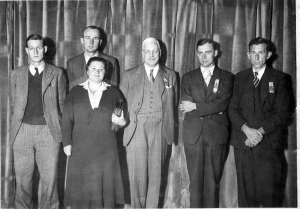
The English team at the Buenos Aires Olympiad 1939
(from l to r) B.H. Wood, Sir Stuart Milner-Barry,
Vera Menchik, Sir George Thomas, C.H.O’D. Alexander,
Harry Golombek
Against Bletchley war-time codebreaker, Sir Stuart Milner-Barry, at the British Championship, Major Open, Coventry 1970, Ron traded his queen for what he always called “assorted bits” and won a fine 55-move game which he fully annotated for the Cavendish Newsletter and which can be found on the cavendishchessclub.org.uk website along with other of Ron’s games.
Then the following year he played this sharp attacking game against B.H. Wood.
R.F. Harman – B.H. Wood
Barnstable Open 1971
French Defence
1 e4 e6 2 d4 d5 3 Nd2
The Tarrasch variation was a lifelong favourite with Ron.
3…Nf6 4 e5 Nfd7 5 f4
At the time this was a fashionable alternative to the traditional 5 Bd3 c5 6 c3 Nc6 7 Ne2.
5…c5 6 c3 Nc6
7 Ndf3
If 7 Ngf3 then Black should not play 7…f6 8 Bd3 cxd4 because of 9 Nxd4! Nxd4 10 cxd4 when, apart from the threats along the b1–h7 diagonal and also the possibility of Qh5+, the white king’s knight can go to f3, whereas in other lines the two knights often get in each other’s way. But instead Black has 7…cxd4 8 cxd4 f6 and if 9 Bd3 fxe5 10 fxe5 Nxd4! 11 Nxd4 Qh4+ recovering the piece with extra material.
7…f6?
This should be delayed for one move. Best is 7…Qb6 8 Ne2 f6 9 g3 cxd4 10 cxd4 Bb4+ and if White plays his intended 11 Kf2 then 11…fxe5 12 fxe5 Ndxe5 wins a pawn. Correct is 11 Nc3 but not 11 Bd2 fxe5 12 fxe5 0–0 13 Bg2 when Black won with a masterly attack after 13…Ndxe5! 14 dxe5 Nxe5 15 Ned4 (not 15 Nxe5 Qf2 mate) 15…Nd3+ 16 Ke2 Nxb2 17 Qb3 Qa6+ 18 Kf2 Bxd2 19 Qxb2 Qd3 20 Rad1 (20 Rae1 Bc3! 21 Rd1 Qxf3+ wins) 20…Qe3+ 21 Kf1 b6! 22 Qxd2 (22 Rxd2 Ba6+ 23 Ne2 Rxf3+ 24 Bxf3 Qxf3+ 25 Kg1 Rf8 decides) 22…Ba6+ 23 Ne2 Rxf3+ 24 Bxf3 Qxf3+ 25 Kg1 Bxe2 26 Re1 Bd3 0-1 in a game between Hamann (not Harman!) and Uhlmann, Halle 1963.
8 g3
Simply 8 Bd3 Be7 9 Ne2 Qb6 10 Qc2 is good for White. But Ron is following the recipe known from the early 60s of moving his king into safety via f2 and g2.
8…cxd4
Better is 8…Be7 9 Ne2 0–0 and if 10 Bh3 f5 For now White could play 9 Nxd4! Nxd4 10 cxd4 with a good game, as in the note to White’s 7th move.
9 cxd4
9…Bb4+
9…fxe5 10 fxe5 (or 10 dxe5) 10…Qb6, would have ruled out the Kf2-g2 manoeuvre because of the possibility of …Ndxe5.
10 Kf2 0–0 11 Kg2
11…fxe5
But here it would be safer not to exchange on e5 so quickly as Black is vulnerable to attacks on the b1–h7 diagonal as well as a knight thrust to g5.
12 fxe5 Be7 13 Bd3 Rf7
13…Qb6 14 Bb1 Re8 15 Ne2 Nf8, over-protecting e6 as well as covering h7, is an even more solid defence.
14 h4
The signal for a kingside attack.
14…Nf8 15 Be3
After 15 Ng5 Bxg5 16 hxg5 g6 White comes up against a brick wall on both the h-file and the b1-h7 diagonal.
15…Bd7
16 Nh3
…h6, either here or on the next move, prevents a white knight going to g5, although the g6 square is then open to invasion by Nf4-g6, perhaps in conjunction with h4-h5.
16…Nb4 17 Bb1 Bb5
True to his enterprsing style, Barry Wood seeks activity on the queenside.
18 Nhg5 Bxg5 19 Nxg5 Rc7
Again preferring counterplay to the more solid defence …Re7.
20 a3 Nc6
21 Qf3
Possible is 21 Bxh7+ Nxh7 22 Nxe6, taking advantage of Black’s 19th move. Then 22…Qd7 23 Nxc7 Qxc7 24 Rc1 Qd7 25 Rc5 Ba6 26 h5 looks promising for White.
21…h6 22 Nh3 Rf7 23 Qg4
23 Nf4 Bc4 24 h5 is stronger.
23…Qb6 24 Re1
To protect the bishop on e3 as …Nxe5 was threatened. Not 24 Bxh6 when 24…Qxd4 is fine for Black.
24…Bc4 25 b4
The only defence to the b2 pawn as 25 Bc1 leaves the d4 pawn hanging.
25…a5!
Now Black has a counterattack. White cannot play bxa5 for fear of the queen check on b2.
26 Nf4
Whose attack will come first?
26…axb4 27 Nh5 bxa3
Though not a mistake, this capture does come back to haunt Black half a dozen moves later, as it opens the a-file for the white rook. So if he wishes to play for a win then it may be safer to push the b-pawn after 27…Kh8 28 Bxh6 Qc7 (not 28…gxh6 29 Nf6 Rg7 30 Qh5) 29 Bc1 b3.
28 Nf6+ Kh8
29 Bxh6!
Hoping for 29…gxh6? 30 Qg8 mate. The alternative 29 Qh5 Qc7 30 Bxh6 allows Black a defence by 30…gxh6 31 Qxh6+ Rh7 32 Nxh7 Nxh7.
29…gxf6
After 29…Qb2+ 30 Kh3 Black could force a draw by repetition after 30…Qf2 31 Qh5 Bf1+ 32 Rxf1 Qxf1+ 33 Kh2 Qf2+ 34 Kh3 gxf6 35 Qxf7 Qf1+ 36 Kh2 (36 Kg4 f5+) 36…Qf2+. But he could also be more ambitious and try to defend his way to victory by 30…Qxa1 31 Qh5 g6 32 Qg5 (32 Bxg6 Bf1+ 33 Kg4 Rh7! and if 34 Rxa1 Be2+) 32…Nh7 33 Qxg6 Re7 34 Nxh7 a2 35 Bg5 Rg8 36 Bf6+ Rgg7 etc.
30 exf6
30…Qc7
30…Qb2+ 31 Kh3 Qf2 32 Bg7+ Kg8 33 Bh6+ is another draw by repetition, this time handed out by White.
31 Qh5 Nh7?
Again Black has the move 31…Kg8! when after 32 Bxf8 Raxf8 33 Qg6+ Kh8 34 Rxe6 Qd7 White would have to reconcile himself to the perpetual.
32 Rxe6
32 Bg7+ Rxg7 33 fxg7+ Qxg7 34 Rxe6 Rf8 (34…Nxd4 is met by 35 Rxa3! because of the weakness of the back rank) 35 Bxh7 also wins for White since 35…Qxh7 allows 36 Rh6 and 35…Be2 36 Rxe2 Qxh7 37 Qxd5.
32…Rg8
If 32…Rxf6 then 33 Re8+ Rxe8 36 Qxe8+ Nf8 37 Bxf8 is sufficient.
33 Rxa3
Neatly defending the g3 pawn whilst bringing the rook into play. A consequence of Black’s 27…bxa3. Also 33 Bg7+ Rfxg7 34 fxg7+ Qxg7 35 Rxa3 Nxd4 36 Bxh7 Be2 37 Rxe2 Qxh7 38 Re5 is clearly decisive.
33…Nxd4?
This leads to immediate defeat. However 33…Rxf6 also fails to 34 Bxh7 Rxe6 35 Bxg8 Re2+ 36 Kh3 Qc8+ 37 g4 and if Black tries to win a piece then he loses at once: 37…Kxg8 38 Qg6+ Kh8 39 Qg7 mate; or 37…Qxg8 38 Bg5+ Kg7 39 Qh6+ Kf7 40 Qf6+ Ke8 41 Ra8+. That rook on the a-file yet again plays a major role.
34 Bxh7!
34…Rxh7
34…Nxe6 35 Bxg8 Kxg8 36 Ra8+ is annihilating: 36…Qd8 37 Qg6+ Kh8 38 Qxf7 Qxa8 39 Bg7+ Kh7 40 Qh5+ Kg8 41 Qh8+ Kf7 42 Qxa8 is one nice merry-go-round to finish the game.
35 Bg7+ Rgxg7
If 35…Qxg7 36 fxg7+ Kxg7 37 Qe5+ Kf8 38 Ra8+ Kf7 39 Qf6 is mate.
36 fxg7+
Actually, even quicker is 36 Re8+ Rg8 37 Rxg8+ Kxg8 38 Qe8 mate. But Black resigned anyway, since after 36…Qxg7 37 Ra8+ Qg8 38 Qe5+ Rg7 39 Rh6 Ron would have used all three of his coordinated major pieces to deliver the mate.
1-0
In this extremely sharp game, Ron showed he was not averse to engaging in tactical complications and was most proficient at finishing off even a strong opponent with a few telling blows.
Farewell to friends
Ron was always a fervent club member as well as a team member and when he eventually took up residence again in London he found the traditional values and loyal membership of Cavendish in Central London to be the perfect choice for him, the more so that his former colleagues at King and King, Syd Kalinsky and Danny Wright, were also playing there and the environment bore some similarities to Islington.
In more recent times I saw Ron on two particularly sad occasions, the first being in 1991, at the funeral of John Ripley in Liverpool. John’s sudden death from meningitis, whilst still in his 40s, was a terrible shock and Ron was deeply upset. However the service was exceptionally well attended, not only by family and friends, but also a large number of pupils and teachers from the school in which John taught, as well as many chess players, particularly from the mighty Atticus club in Liverpool, of which John was also a member. Yet even at the moment of greatest sadness, when John’s body was being lowered into the ground, there was an unscripted tinge of humour, which John himself would have surely picked up. The priest was casting holy water over the grave a little too zealously and in doing so he splashed a couple of mourners in the face, upon which both Ron and I could not help but notice them suddenly flinch, rub their eyes and then quickly take cover lest a further deluge came their way.
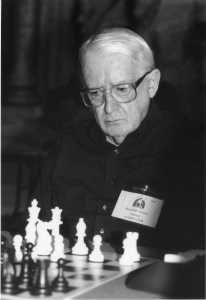
Ron Harman may have played more competitive tournament and match games than any other English amateur chess player (Photo: Mark Huba)
Then, in 1996, Ron Banwell died under equally tragic circumstances. He suffered from haemophilia and in the 80s was given blood infected with the HIV virus. Though he was in fact one of the very few victims awarded financial compensation by the government, the drugs that are available today were not available then and within ten years he died of AIDS-related illnesses at the age of 62. Only three chess players attended his funeral, Ron, Paul Mercer and myself, but a great many people came from the art world, particularly those in Rye, Sussex, where, in his final years, Ron Banwell had settled and become a popular member of the local community.
The two Rons had first played each other in a competitive game in 1960, while their very last encounter, a year before Ron Banwell’s death, came at the Hastings Centenary Tournament in 1995, at a time when Ron Harman admitted they were both “a pale shadow of their former selves.” In a letter Ron wrote to me in 1996, he said: “Some thirty seven years after we first met and became good friends, we found ourselves gazing out to sea at Rye Harbour, in Sussex, and talking about my suggestion that Ron might leave some money to the BCF in his will, as his fatal illness was beginning to take hold. He was keen to make such a bequest, both for the benefit of chess, and to me, as a small token of our long and close friendship. In the event, he left a good sum to the federation, but nothing to yours truly . . .”
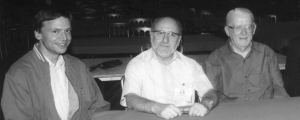
A reunion at the Ron Banwell Memorial tournament at Alexandra Palace in 2000 (from l to r) Jimmy Adams, Stewart Reuben and Ron (Photo: Mark Huba)
In the 1990s Ron was living in Newington Green, bordering on Islington and only a short distance from the council flat where he had spent most of his younger days. He was about to commence a university course, I think in journalism, which would reinforce Kenny’s statement that “Ron was better at words than figures,” even though he was an accountant by profession. However he then had to undergo heart bypass surgery, almost certainly the result of being a smoker all his life, and his health was further undermined when he developed diabetes. A chess friend then helped him to obtain more suitable accommodation in Finsbury, within walking distance of the Cavendish club and also, coincidentally, very close to the site of his former school where he had developed his chess strength. He continued to play for Cavendish, serving as a team captain, treasurer, and games editor for its newsletter, up to 2009, shortly after which he became too ill even to attend the club.
That same year another of Ron’s best friends, Paul Mercer, passed away at the age of 67. Paul had returned to England in the early 90s after spending over twenty years working abroad as a civil engineer and, although he never studied chess, he was a very strong ‘natural’ player. In fact after winning the Durban championship he was ranked among the top ten players in South Africa and even shortly before his death, in his last ever competitive game played at the Ashtead Chess Club’s Christmas tournament, he made a draw against the then reigning British Champion David Howell.
The endgame and post-mortem
After 2009 Ron was hardly seen in the chess world but he cultivated a new circle of friends at a local cafe where taxi drivers would congregate and engage in lively conversation. But, unfortunately, Ron felt that he had in some way been responsible when the cafe suddenly closed down, and this must have had a further detrimental effect on his health.
Ron died on 10 September 2014 from pneumonia, shortly after Kenny had arranged for his admission to a nursing home in Finsbury Park. The funeral took place on 26 September at Islington Crematorium, near East Finchley, with thirteen attendees, including of course some of the names mentioned in this article, such as Kenny Harman, Danny Wright, Syd Kalinsky and myself, together with another former Islington player, Ray Cannon, and also Natasha Regan, representing the Cavendish club.
At the final ceremony a splendid biographical sketch, written by Kenny, was read out in the chapel and brought to light many personal details about Ron’s life which were almost certainly unknown to members of the congregation. For example, Kenny mentioned that Ron was psychologically deeply affected by his inability to bond with his father after he had returned from years of imprisonment in a Japanese POW camp in the Second World War.
Although Ron once warned me: “Chess is alright – provided you don’t take it too seriously” he himself played thousands upon thousands of match and tournament games in his lifetime, perhaps more than any other English chess amateur. Chess seemed to satisfy his need for both competition and intellectual challenge. As he expressed it: “Every move is a new problem.”
Ron was always a devoted club member and a great believer in the social benefits of chess. You could say he championed the chess club and I think many of his provocations at club meetings were really designed to stimulate involvement and debate from lethargic members and not to create animosity.
He never really changed much over the years, still used an old typewriter long after computers became standard, and never stopped complaining about prizes, pairings and policies at weekend tournaments, from which, regrettably, he too often withdrew if he did not get satisfaction. However, as David Sedgwick wrote on the English Chess Forum: “He could be an arbiter’s nightmare, but I always felt that the cause of this was that few people loved chess more than he did.”

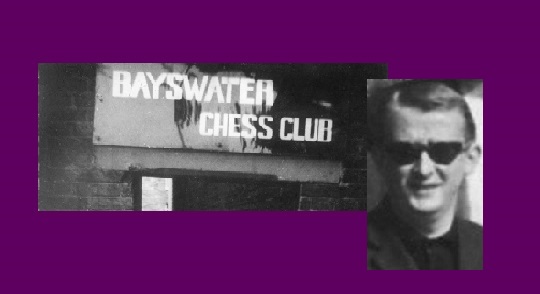
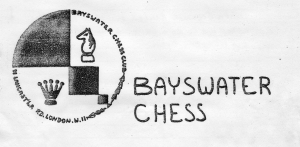
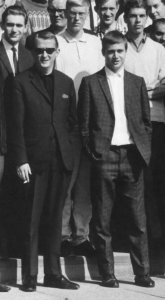
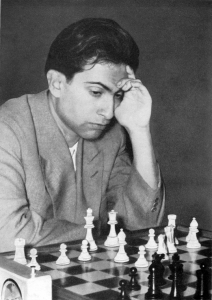
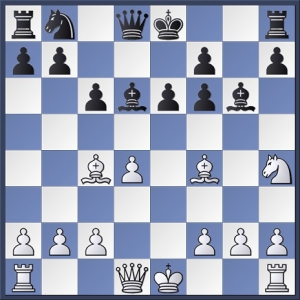
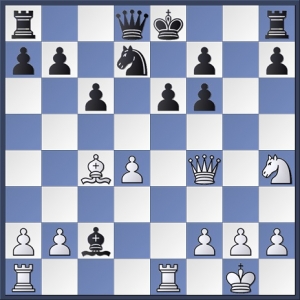
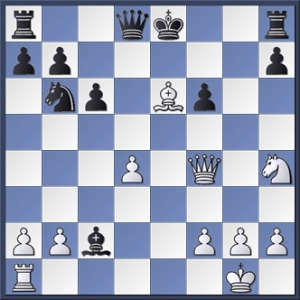
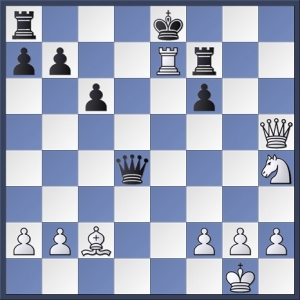
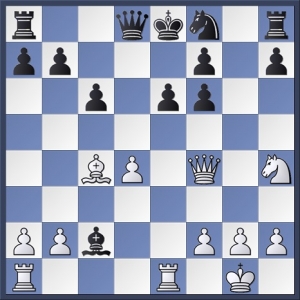
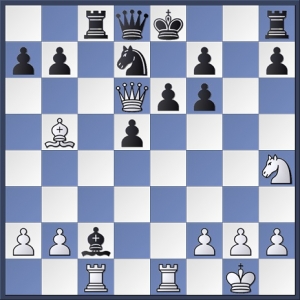
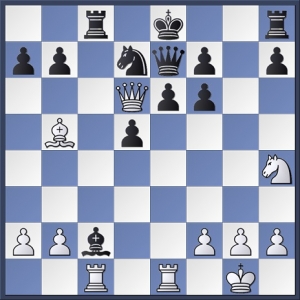
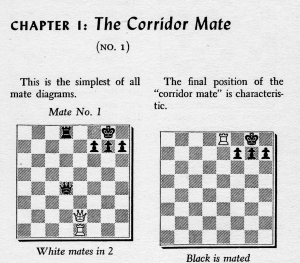
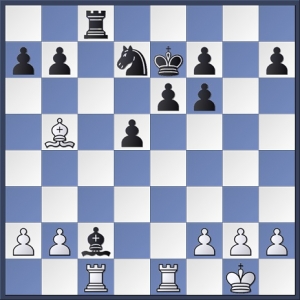
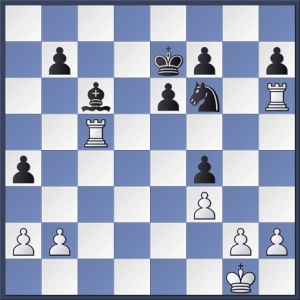
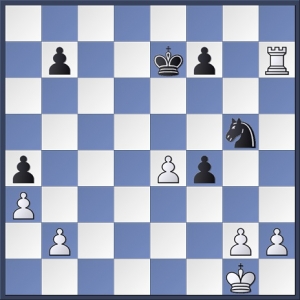
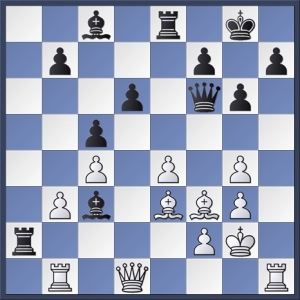
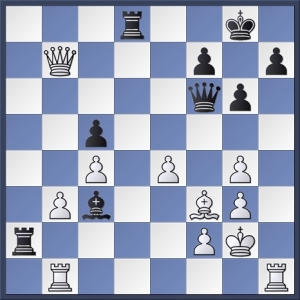
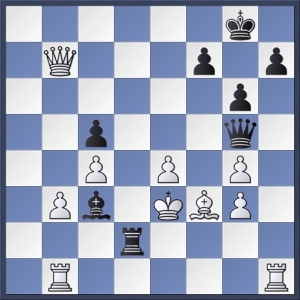
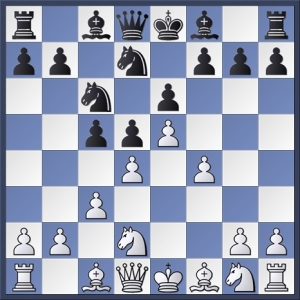
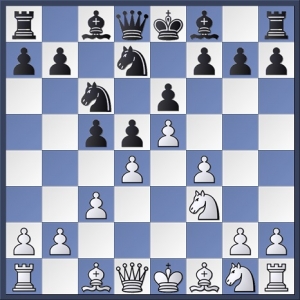
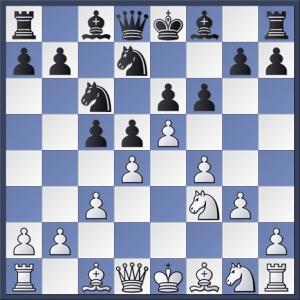
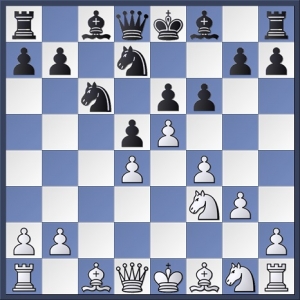
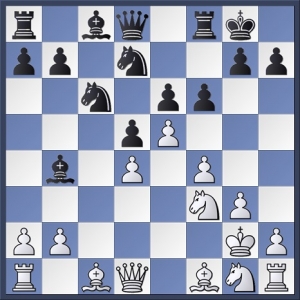
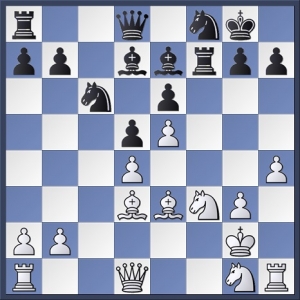
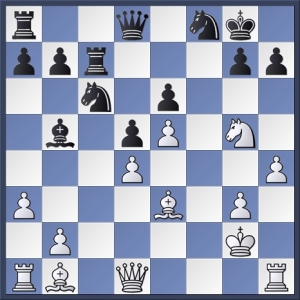
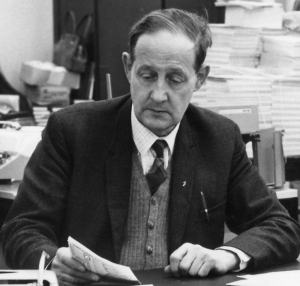
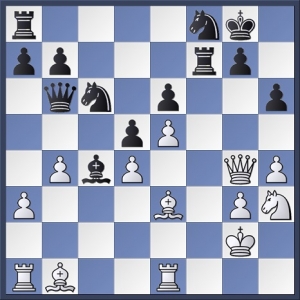
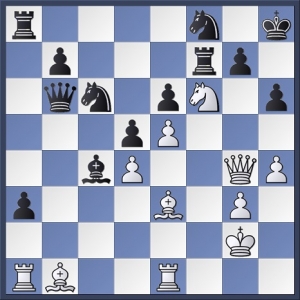
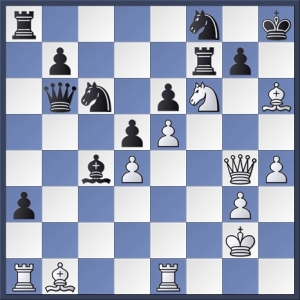
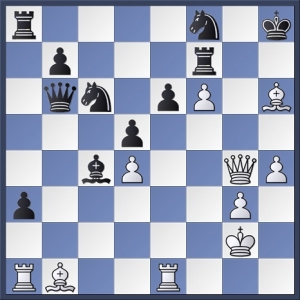
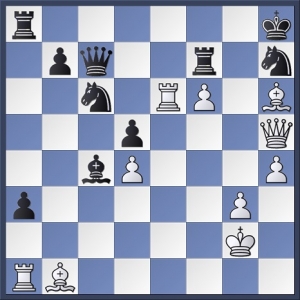
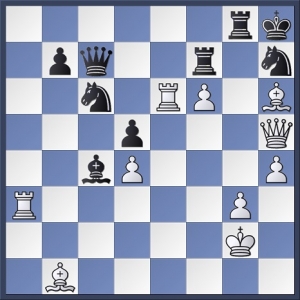
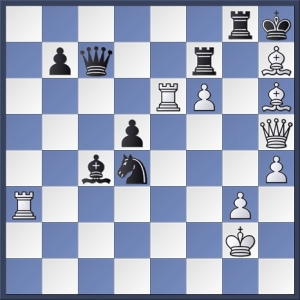
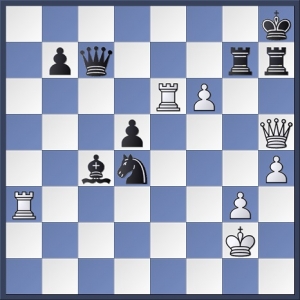
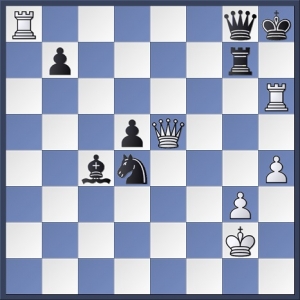


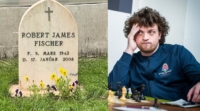
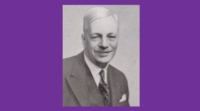
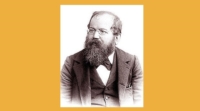
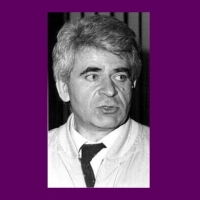
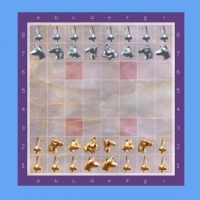

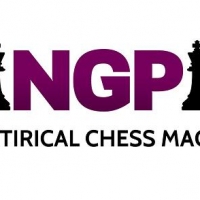
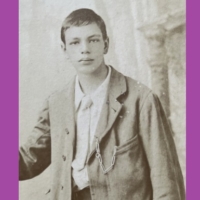
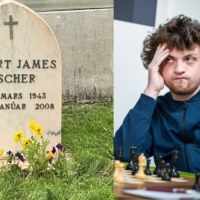
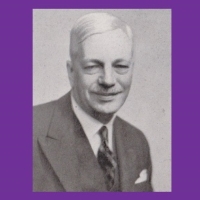
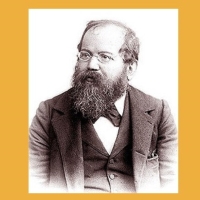
Really enjoyed this 2nd article on Ron Harman. He was such a big figure at Cavendish Chess Club and on the rare occasions he was not at the club on a Thursday night he was the main topic of conversation.
His many contributions certainly did “stimulate debate” and his great love of chess was never in doubt.
He is probably up there now or in the other place challenging all comers and debating at length some grievous breach of chess etiquette.